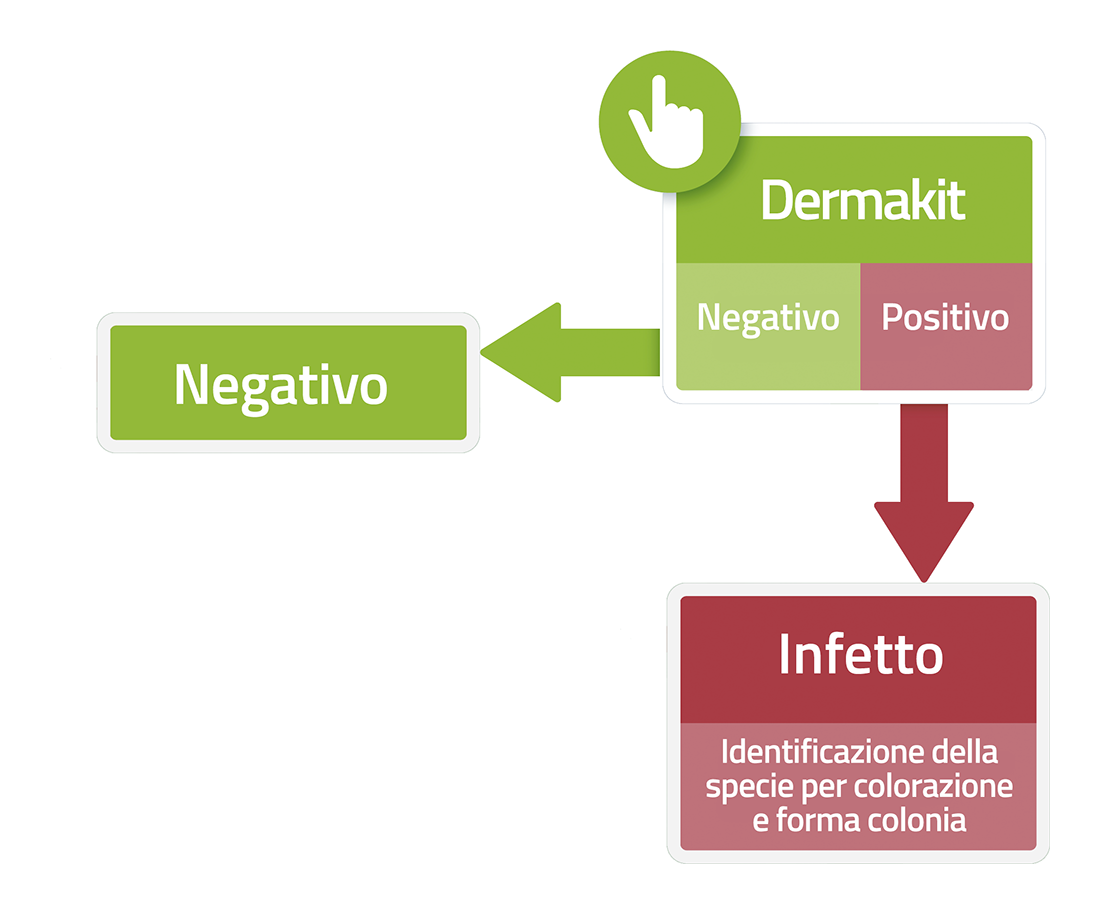Dermakit
Rapid microbiological test for the identification of Dermatophytes.
DermaKit is a rapid microbiological test for the identification of dermatophytes in hair or skin scraping of different animal species
Dermatophytosis in pets is a superficial cutaneous mycosis most commonly caused by fungi of the genus Microsporum and Tricophyton. It mainly affects cats, horses and dogs, although less frequently.
In immunocompetent animals, the infection is often self-limiting, but various factors and conditions such as FIV cats or puppies aswell as young or old dogs, animals living in overcrowded conditions or cortisone therapies can promote the clinical onset and spread of the disease. Persian cats and Yorkshire terrier dogs seem to be more susceptible to infection.
Dermatophytes are transmitted by direct contact with an infected animal. since spores are environmental resistant (months or years), indirect infection is also possible through the contaminated environment.
Dermatophytes can metabolize keratin, which they feed on, and grow on the horny layer of the skin and nails and in the horny keratinized layer of the hair follicle.
Typically, lesions occur as focal or multifocal alopecia areas of circular or irregular shape with desquamation and crusting. On the edge of the affected area papules or follicular pustules are frequently present. Itching is generally absent even if it may be present even intensely in some subjects.
Dermatophytosis in cats can be asymptomatic, i.e. no clinical lesions are present, but cats remain carriers. Clear lesions are more easily observed in young subjects on the face, auricles and limbs, while in adults more or less itchy miliary dermatitis may be present. The formation of subcutaneous nodules (pseudo-mycetomas) is possible in Persian cats.
Dermatophytosis in dogs occurs with multifocal alopecia areas and kerion (nodular reactions involving the dermis with alopecia and exudative ulcers usually localized on the face). Dermatophytosis is a zoonosis and can be transmitted to humans, causing skin lesions. The development of clinical forms in humans depends on many factors including individual sensitivity, duration of the contact between person and animal. Also immunocompromised and young subjects can be predisposing factors. Dermatophytosis are clinically similar to other skin diseases, so a diagnostic confirmation is important before undertaking the necessary antifungal treatment to avoid problems for the owners.

